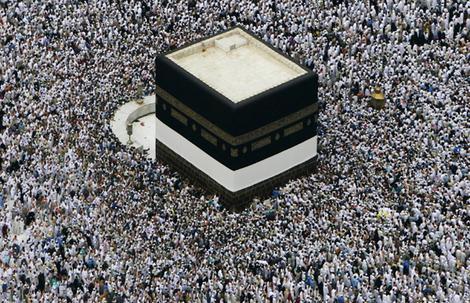
Organiser, 12-5-2012, EDITORIAL:
The Supreme Court ruling on ending Haj subsidy by the government is a welcome move, for it rings the curtain down on one of the long-pending contentious issues. The court has set a ten-year deadline to phase out the tax payers’ money government doles out on a purely religious ritual performed by a section of the population. Over the years, sponsoring pilgrimage has become a competitive political stunt in India.
Haj subsidy has a long history. It was introduced by Jawaharlal Nehru in 1959. Even then it was vehemently condemned. In 1992, the then Prime Minister P.V. Narasimha Rao increased the subsidy substantially, both in terms of money and in terms of the number of pilgrims. The data on the pilgrimage expenditure is not available before 2004. The amount spent in 2004 was Rs 160 crore; in 2005 it was Rs 185.81 crore; and has grown to Rs 826 crore in 2009. The ten-year period given by the SC is a long time. It should have been stopped forthwith.
There was always a basic question raised against the subsidy. How can a secular government pay for the expenditure of a religious ritual of believers of one sect? In fact, several Hindu organisations started demanding subsidy for Hindu pilgrimages too. A substantial section of the Muslims also opposed the Haj subsidy, terming it as un-Islamic to accept money to perform the Haj. It is safe to say that more or less all sections except the self-serving political class were against the pilgrimage subsidies.
In a spin off, the Andhra Pradesh government in April 2008 under Rajashekhara Reddy and the Tamil Nadu government in December 2011 under Jayalalithaaa announced subsidies for Christians travelling to Jerusalem. Shivraj Singh Chauhan, Chief Minister of Madhya Pradesh announced last month, a 50 per cent subsidy, up to a maximum of Rs 30,000 once in life to pilgrimages to 15 centres in country, holy to different faiths.
India has one of the oldest traditions of thirth. from north to south and east to west, criss-crossing the country millions of Hindus undertake, often rigorous journeys, as part of the completion of rituals in one’s life. Over the decades, several other sections have created pilgrimage centres and rituals in India like visiting the Ajmer Sherif for Muslims and Velankanni for the Christians. Tirth is an exercise in social bonding and cultural integration of the nation.
To begin with, it was an unwise decision to bestow favours on one community in a nation that is pledged to treating all religions equal. That it took the rap of the judges’ gavel to end this subsidy speaks for the lack of political will, as successive governments only went on hiking the Haj ‘quota’ and the subsidy.
On the other hand, the government could spend a part of the money in the upkeep of the pilgrimage centres around the country. Except for a hand-full of well-maintained shrines, the basic amenities at some of the most visited holy places are abysmal. Devotes are often left to the mercy of the touts who fleece them. The governments, while propagating this age-old tradition of thirth, can help in ways other than offering sops and subsidies.







